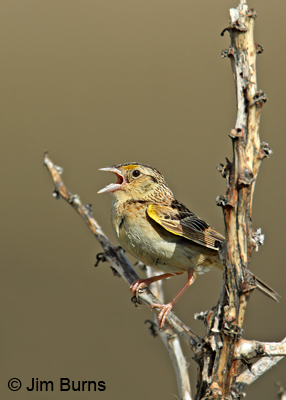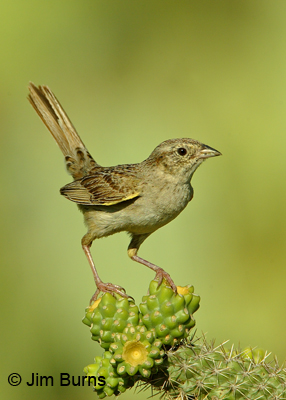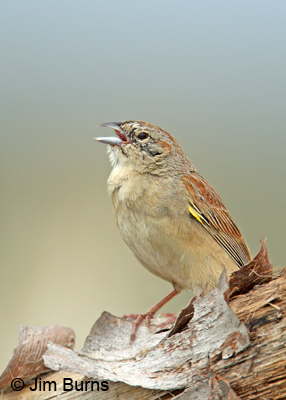|
Botteri 's Sparrow |
Those of you who spent July in San Diego probably noticed something was different when you got back. When you left, the Valley was an oven. When you returned, it was a sauna. Welcome to Arizona's second summer, and nowhere is it more apparent than in the grasslands of our southeast where daily downpours are insuring that the summer of 2010 will not be another 'nonsoon.'
Grassland sparrows, not trogons or hummingbirds, are the news of the day on the hotline postings this time of year. Rare and colorful species typically grab all the birding headlines south and east of Tucson, but there are three special species of Arizona sparrows just waiting for second summer monsoons to revitalize the grasslands they call home before they begin singing and nesting.
These three sparrows, Botteri's, Cassin's, and Grasshopper, are not rare, but neither are they colorful or conspicuous, and serious birders know just how difficult they can be to find and identify until they tee up and sing on territory in the monsoon season. The best places to hear and hope to see them are grasslands in the following areas: the road through the foothills up to Madera Canyon east of Green Valley; Empire Cienega Resource Conservation Area on Highway 83 just north of Sonoita; the entrance road to Patagonia Lake State Park south of Patagonia; and Fort Huachuca in Sierra Vista.
Cassin's is the drabbest but most conspicuous of the three, arguably the easiest to find and see because of its distinctive, plaintive three syllable song which carries for long distances and is often sung as the male skylarks into the air from an exposed perch. Like its sparrow family neighbors, Cassin's has a small patch of yellow at the bend of the wing, presumably a camouflage adaptation which helps it blend into the grasses it calls home. It nests on or near the ground and was named for John Cassin, a nineteenth century Philadelphia ornithologist.
Botteri's, slightly larger than Cassin's but more inconspicuous despite its warm, reddish tones, is known primarily for its 'bouncing ball' song, a series of chip notes becoming faster and softer toward the end. Luckily for birders this rather easily recognizable song is typically sung by the male teed up on a fencepost or bush. Botteri's, a ground nester, is a Mexican sparrow which ranges northward just into Arizona and southern Texas and was named for a nineteenth century Croatian ornithologist who taught natural history in Mexico.
Grasshopper Sparrow, though the most abundant of the three, is the smallest and least conspicuous. Good luck seeing this tiny waif because typically it does not sing from a high, exposed perch, and its song is a soft chip followed by a high trill which sounds like nothing so much as, you got it, a grasshopper. How high? If you have old ears, you've already lost its range, but keep looking because, when seen well in good light, this is a very colorful little sparrow, its mustard supercilium and rufous neck and nape spotting reminiscent of its Ammodramus relative, Le Conte's Sparrow.
Are you safe on southeastern Arizona backroads? I wouldn't drive the unpaved ones during or right after a monsoon storm passes through, but I also wouldn't worry about "border security." Border Patrol is everywhere. You'll see far more of them than the sparrows you're seeking.

